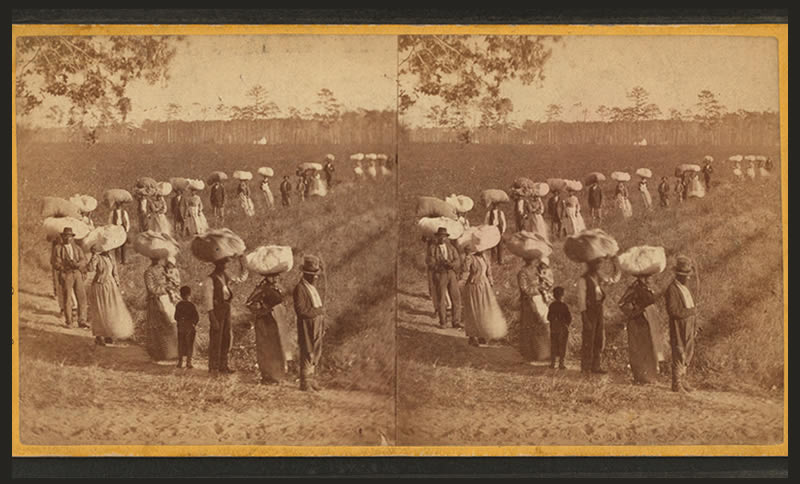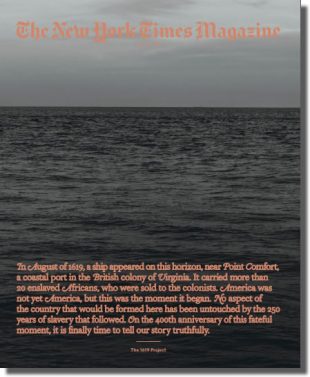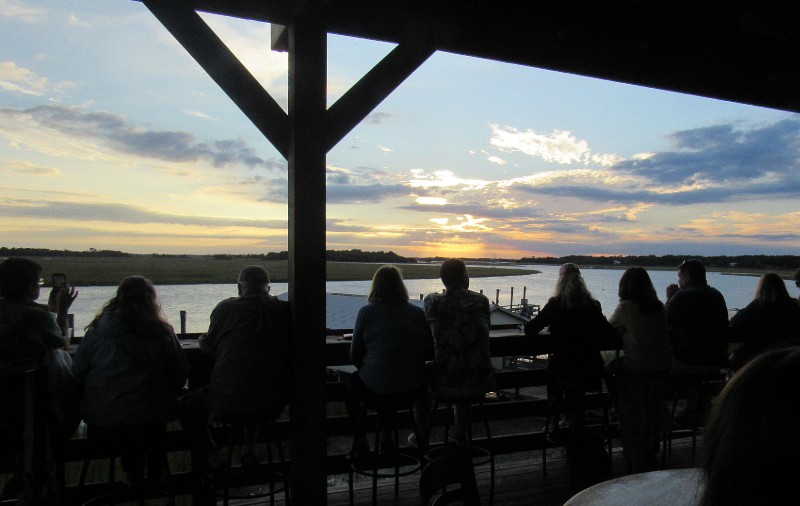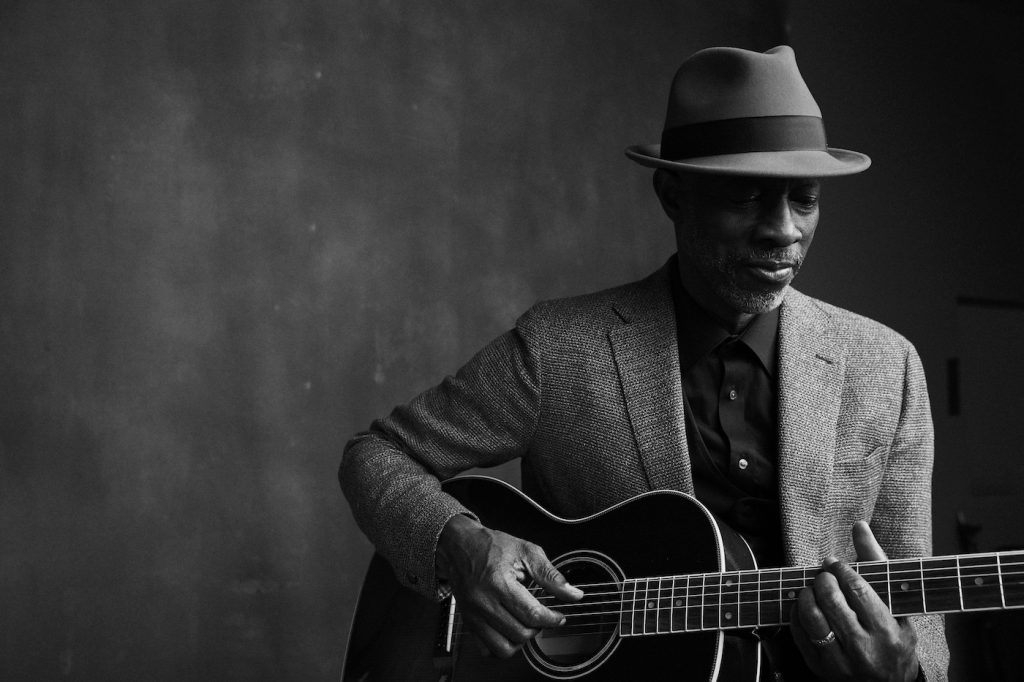HITCHING A RIDE. A helicopter took off Saturday from center field at Joe Riley Stadium after dropping off the coach of the Charleston RiverDogs (you can see him on the big video screen at right). Tonight’s game, the last home game for the regular season, has been cancelled due to Gov. Henry McMaster’s hurricane evacuation order. The RiverDogs ended the season with a 73-66 record. Great year!
IN THIS EDITION FOCUS: Resources to help you get ready for Hurricane Dorian
FOCUS: Resources to help you get ready for Hurricane Dorian
COMMENTARY, Brack: This blockbuster report should change your view of history
IN THE SPOTLIGHT: S.C. Ports Authority
GOOD NEWS: Blue Jamboree to attract big-name Democrats in October
FEEDBACK: Send us your letters
MYSTERY PHOTO: Kicking back to watch a grand sunset
S.C. ENCYCLOPEDIA: South Carolina’s Hispanic residents
CALENDAR: Keb’ Mo’ Solo set for Sept. 19 at Gaillard
FOCUSFOCUS: Resources to help you get ready for Hurricane Dorian
Staff reports | With evacuation of the coast ordered by Gov. Henry McMaster starting at noon Monday, hundreds of thousands of residents and visitors will head west in anticipation of Hurricane Dorian’s arrival on Wednesday or Thursday.
Here are some links and resources that can help you prepare as you plan to leave or ride out the massive storm.
EVACUATION: McMaster orders coastal evacuation. Lanes will be reversed on Interstate 26 from Charleston to Columbia and on U.S. 278 from Hilton Head starting at noon today. Schools and government offices, already closed for Labor Day, will be closed Tuesday with many expected to be closed for the rest of the week. The Post and Courier. More stories: WIS TV; The State.
-
- Lane reversal process begins Monday morning. WCSC TV.
- Charleston-area evacuation routes. The Post and Courier.
- State price-gouging laws in effect. WCSC TV.
RESOURCES: South Carolina Hurricane Guide. This guide offered by the state includes a lot of helpful information to help you get ready for a big storm.
-
- Preparation tips. The Post and Courier.
- Emergency check-list. The Post and Courier.
- List of emergency shelters.C. Emergency Management Division.
- List of closings and delays.C. Emergency Management Division.
TRACK THE STORM
-
- Maps, advisories and forecasts. National Hurricane Center.
- Maps, satellite images, radar and more on one updated page. CNN.
- Trove of maps and models, including “Spaghetti map” of computer models. com
- Latest track of Hurricane Dorian. CNN.
FORECAST: Dorian should weaken (some) as it approaches Carolinas. Forecasters say the massive storm should weaken as it approaches the slightly cooler waters along the coast. The Post and Courier
NEWS ROUNDUP
-
- For a fuller news roundup, see our SCClips summary today for free.
Have a comment? Send to: editor@charlestoncurrents.com
COMMENTARYBRACK: This blockbuster report should change your view of history

Laborers returning at sunset from picking cotton, on Alex. Knox’s plantation, Mount Pleasant, near Charleston, S.C. Photo by G.N. Barnard. Date of photo likely is 1876-79.
By Andy Brack, editor and publisher | To better understand why South Carolina is like it is, you need to read The 1619 Project.
 This blockbuster re-telling of history not taught in schools likely will provide a new understanding about how America became a country — and how enslaved Africans played a vital role — not just a subservient one — in the creation of our democracy.
This blockbuster re-telling of history not taught in schools likely will provide a new understanding about how America became a country — and how enslaved Africans played a vital role — not just a subservient one — in the creation of our democracy.
Recognizing this fundamental reality may help Americans cope with the lagging vestiges of slavery, still evident today in people’s attitudes and behavior, as well as our imbalanced economic system whose structure dampens the American Dream for far too many.
Four hundred years ago this month, the first enslaved Africans arrived in Virginia. The 1619 Project, related in a full issue of The New York Times Magazine, opened with these words: “No aspect of the country that would be formed here has been untouched by the 250 years of slavery that followed. On the 400th anniversary of this fateful moment, it is finally time to tell our story truthfully.”
What unfolds — including more than a dozen impacts of South Carolina’s on the system of slavery — is chilling in its violence and emotion. It gives fresh perspectives and uncomfortable truths on how this system of forced labor created enormous white wealth while dehumanizing people with dark skin:
“Out of slavery — and the anti-black racism it required — grew nearly everything that has truly made America exceptional: its economic might, its industrial power, its electoral system, diet and popular music, the inequities of its public health and education, its astonishing penchant for violence, its income inequality, the example it sets for the world as a land of freedom and equality, its slang, its legal system and the endemic racial fears and hatreds that continue to plague it to this day.”
“This piece unmasks the history of America not written in schoolbooks or taught in classes,” said Columbia public relations executive Bud Ferillo, who created the “Corridor of Shame” documentary about inequities in South Carolina schools. “It offers sobering, often painful, discoveries that should make us think and feel anew about our past, and where that leads us now.”
 The Rev. Joseph Darby, an AME preacher in Charleston who is a longtime official with the NAACP, hopes the sweeping and frank account of America’s missing history will lead to systemic discussions and progress.
The Rev. Joseph Darby, an AME preacher in Charleston who is a longtime official with the NAACP, hopes the sweeping and frank account of America’s missing history will lead to systemic discussions and progress.
“The 1619 Project is an invaluable tool for everything from community dialogue to academic research to public policy,” he said. “The Project has done something rare by showing how slavery and its still lingering residue shaped and still hinders progress and equity in America.”
Darby shared that looking at the system of slavery and its successor caste system, rather than particular dates and events related, irritated right-wing critics.
“The National Review bemoaned the fact that the Project didn’t focus on more individual black history makers, and I understand why they raised that question. When discussions of race or any problem — like white urban terrorism – focuses on the “individual,” you can dodge frank discussion of the system that produced the individual.”
The Project, however, didn’t shy away from talking about the big impact of two individuals related to South Carolina. One was John C. Calhoun, a vice president and fiery senator who devised the brilliant political concept of nullification, which was the foundation of the cry of “state’s rights” that spread tentacles from the Civil War and the Jim Crow era to the Tea Party and white nationalism now rearing its head.
The Project also highlighted the story of decorated black Army veteran Isaac Woodward who was blinded in 1946 on the way home to visit his mother in Whitmire. The Project shares that his maiming was “one of the catalysts” for what became the modern civil rights movement, which U.S. District Judge Richard Gergel of Charleston addressed this year in a book titled Unexampled Courage.
“I was delighted The 1619 project gave such prominent treatment to the Woodard story,” Gergel told us. “I also was glad to see my central thesis accepted.”
Anyone in state or local government — particularly elected officials — must read The 1619 Project to understand how America became America. It isn’t comfortable, but it’s a step toward dealing with a system that’s still unequal for too many.
Andy Brack’s new book, “We Can Do Better, South Carolina,” is now available for $14.99 in paperback via Amazon.
- Have a comment? Send to: editor@charlestoncurrents.com
SPOTLIGHT: S.C. Ports Authority
 Founded in 1942, the South Carolina Ports Authority (SCPA) owns and operates public marine terminals at two port facilities, the Port of Charleston and the Port of Georgetown, in addition to inland ports in Greer and Dillon, S.C. These facilities are owner-operated terminals, meaning the SCPA owns the terminals, operates all container cranes, manages and operates all container storage yards and leads all customer service functions in both the yard and the lanes.
Founded in 1942, the South Carolina Ports Authority (SCPA) owns and operates public marine terminals at two port facilities, the Port of Charleston and the Port of Georgetown, in addition to inland ports in Greer and Dillon, S.C. These facilities are owner-operated terminals, meaning the SCPA owns the terminals, operates all container cranes, manages and operates all container storage yards and leads all customer service functions in both the yard and the lanes.
SCPA promotes, develops and facilitates waterborne commerce to meet the current and future needs of its customers, and for the economic benefit of the citizens and businesses of South Carolina. In fact, SCPA facilities in Charleston, Dillon, Georgetown and Greer drive $53 billion in annual statewide economic impact and 1 in every 11 SC jobs is attributed to the Port.
- For more information, visit scspa.com.
- To meet all of our underwriters, click here.
Blue Jamboree to attract big-name Democrats in October
Staff reports | Thousands of Democrats will flock to a North Charleston field Oct. 5 to see big-name presidential candidates as the Charleston County Democratic Party holds its 2019 Blue Jamboree.
 The event, which has been growing since it started in 2010 with 150 people, is getting a lot of attention due to the 2020 presidential contest with more than 2,000 tickets already being sold, according to the county party.
The event, which has been growing since it started in 2010 with 150 people, is getting a lot of attention due to the 2020 presidential contest with more than 2,000 tickets already being sold, according to the county party.
Through Sunday, the party is selling tickets for 50 percent off for the event, which will feature other big names in the party, live music and more in The Bend off Azalea Road in North Charleston.
Sponsors of the event include these presidential candidates: Kamala Harris, Joe Biden, Bernie Sanders, Elizabeth Warren, Tom Steyer, Cory Booker, Andrew Yang, Pete Buttigieg, Michael Bennet, Tulsi Gabbard and Julian Castro.
A volunteer said the previous highest attendance was up to 1,500 people for the 2015 event, which included Democratic presidential hopefuls Hillary Clinton, Sanders and former Baltimore Mayor Martin O’Malley.
In other news:
Halting abortion bans. State Sen. Margie Bright Matthews, a Colleton County Democrat whose district includes part of southern Charleston County, wrote an impassioned opinion piece in Friday’s Statehouse Report calling for the end of efforts to ban abortion in the state. She writes: “If my colleagues in the Senate cannot see that, if they insist on using deceptive measures and to bend the rules of legislative protocol and process just to score political points, then they should know that I’m prepared to stand against tough odds and show the world that it’s possible to defeat this abortion ban.” Read the full piece here.
Not so good: ‘Alarming’ report shows dire need of affordable housing in S.C. SC Housing released its first comprehensive Housing Needs Assessment for the state of South Carolina in nearly 22 years. In 41 of 46 counties in the state, the average renter is unable to afford a two-bedroom apartment, and current affordable housing only serves one-in-five low-income renters. It called the findings “alarming” and said it should prompt “legislation and in housing policy.” Read the report.
FEEDBACKSend us your thoughts
We’d love to get your impact in one or more ways:
Send us a letter: We love hearing from readers. Comments are limited to 250 words or less. Please include your name and contact information. Send your letters to: editor@charlestoncurrents.com. | Read our feedback policy.
Tell us what you love about the Lowcountry. Send a short comment – 100 words to 150 words – that describes something you really enjoy about the Lowcountry. It can be big or small. It can be a place, a thing or something you see. It might the bakery where you get a morning croissant or a business or government entity doing a good job. We’ll highlight your entry in a coming issue of Charleston Currents. We look forward to hearing from you.
MYSTERYKicking back to watch a grand sunset
Sunsets are glorious at this time of year with the evening build-up of clouds. Here’s a relaxing local place to watch the evening ebb, but where is it? Send your guess to editor@charlestoncurrents.com. And don’t forget to include your name and the town in which you live.
Our previous Mystery Photo
 Our Aug. 26 mystery, “This could be the beginning of something good” included a clue in the title. The photo near the Coast Guard station in Charleston shows the beginning of the Low Battery wall along the Ashley River at the intersection of Tradd Street and Murray Boulevard.
Our Aug. 26 mystery, “This could be the beginning of something good” included a clue in the title. The photo near the Coast Guard station in Charleston shows the beginning of the Low Battery wall along the Ashley River at the intersection of Tradd Street and Murray Boulevard.
Charleston native Henry Horres Jr. knew the answer, observing, “it might be hard for some but not for a true Charlestonian.”
Hats off also to these sleuths who identified the photo: Legare Clement, Jim McMahan and Kristina Wheeler, all of Charleston; George Graf of Palmyra, Va.; Rose Riordan of Pawleys Island; Jay Altman of Columbia; and Dolly Hinton.
Graf provided this extra information, according to historiccharleston.org, “Tradd Street, which stretches from the Ashley to the Cooper rivers, is one of the original carriage ways laid out in the 1680 “Grand Modell” of Charles Town. Tradition says the street was named for Robert Tradd, said to be the first child of European descent born in the Province. It may instead have been named for his father, Richard Tradd, who by 1679 was living at the northeast corner of present-day Tradd and East Bay.”
- Send us a mystery: If you have a photo that you believe will stump readers, send it along (but make sure to tell us what it is because it may stump us too!) Send it along to editor@charlestoncurrents.com.
HISTORY: South Carolina’s Hispanic residents

Latin dancers from Florence, S.C., perform a variety of Hispanic dances including, salsa, merengue and bachata for the crowd during the National Hispanic Heritage Month observance ceremony at Patton Hall on Shaw Air Force Base, S.C., Sept. 27, 2018. The ceremony recognized the exceptional achievements and contributions that Hispanics have made in fighting and safeguarding the nation throughout history. (U.S. Army photo by Sgt. Von Marie Donato) (Photo Credit: Sgt. Von Marie Donato)
S.C. Encyclopedia | Hispanics are among South Carolina’s oldest and most recent immigrant groups. Long before English settlers founded colonies in the Massachusetts Bay, Spanish explorers laid claim to territory in what is now the United States from the Atlantic to the Pacific. From bases of operation in the Caribbean and Mexico, Spanish emissaries established presidios and missions to protect Spain’s northern colonial frontier. In 1526 Spaniard Lucas Vásquez de Ayllón established the first European settlement in present-day South Carolina (and the United States), San Miguel de Gualdape.
A variety of difficulties led to its abandonment by 1527, but a second Spanish settlement near present-day Beaufort, Santa Elena, served as the capital of “La Florida,” the name given to Spain’s holdings in the Southeast, from 1566 to 1576. After Spanish settlers abandoned the Santa Elena site in 1587, Franciscan friars from missions along the coast continued to visit Indian communities in the area. Spain lost its claims to most of present-day South Carolina in the 1670 Treaty of Madrid with Great Britain.
The terms “Hispanic” and “Latino” apply to a broad category of U.S. residents that include persons of Latin American and/or Spanish ancestry. Tremendous diversity exists within these groups in terms of national origin, socioeconomic class, educational attainment, and other characteristics. While a sizable Spanish-speaking population has resided in the United States throughout its history, the volume of Hispanic immigration in the late twentieth century resulted in this group becoming this country’s largest minority population by the year 2000.
Following national trends, South Carolina experienced a rise in its Hispanic population beginning in the second half of the twentieth century. New residents of Cuban and Puerto Rican origin arrived beginning in the 1960s, largely due to military and industrial employment. Colombians, most employed in the textile industry, immigrated to the upstate in the 1970s, and beginning in the 1990s large numbers of Mexican and Central American immigrants arrived. Because of these and other factors (as well as factors in Latin America such as deteriorating economic and political conditions), South Carolina was among eight states with the fastest-growing Hispanic population in the 1990s.
Census data reports that their numbers more than tripled in that decade to 95,076, or 2.4 percent of the total state population. Analysts agree, however, that Hispanics across the nation are largely undercounted in the census process. The census of 2000 revealed that the majority (fifty-six percent) of Hispanic residents of South Carolina were of Mexican origin, followed by Central and South Americans. Thirteen percent were Puerto Rican, and three percent were of Cuban origin.
The impact of this new population group is seen through changes in popular culture, supermarket and restaurant offerings, bilingual signage, the emergence of Spanish-language media, and in public education. It is also evident in their economic contribution, particularly in labor-intensive, low-wage industries. Further, the purchasing power of Hispanics in South Carolina in 2002 was estimated at more than $2.2 billion.
A commission appointed by South Carolina Gov. Jim Hodges in 2000 recommended that the state government make sweeping changes, particularly in the area of social services, to keep pace with the growing Hispanic population. South Carolina, as did many states that saw tremendous growth in Latino residents, scrambled to accommodate its new residents.
Editor’s note: The U.S. Census estimated in 2017 that 267,398 people in South Carolina (5.5 percent of a total population of 4.9 million) were of Hispanic descent. More.
— Excerpted from an entry by Elaine C. Lacy. This entry may not have been updated since 2006. To read more about this or 2,000 other entries about South Carolina, check out The South Carolina Encyclopedia, published in 2006 by USC Press. (Information used by permission.)
ON THE CALENDARCALENDAR: Keb’ Mo’ Solo set for Sept. 19 at Gaillard
Staff reports | American blues musician Keb’ Mo’, who was born in California in 1951 as Kevin Roosevelt Moore, will show why he’s earned four Grammy Awards with a Sept. 19 performance at the Charleston Gaillard Center with music that often defies labels
It all took off for Keb’ Mo’ in 1994 with the self-titled release under his newly coined Keb’ Mo’ moniker. With 14 albums to his credit, he’s received 11 Grammy nominations, including Country Song of the Year for “I Hope,” co-written with The Dixie Chicks, and three alone for his 2014 self-produced release, BLUESAmericana including Americana Album of the Year.
Over the past two decades, Keb’ has cultivated a reputation as a modern master of American roots music through the understated excellence of his live and studio performances. Artists who have recorded his songs include B.B. King, Buddy Guy, the Dixie Chicks, Joe Cocker, Robert Palmer, Tom Jones, Melissa Manchester, Solomon Burke and the Zac Brown Band, to name a few.
He also has been featured in TV and film, playing Robert Johnson in the 1998 documentary “Can’t You Hear The Wind Howl,” appeared three times on the television series, “Touched By An Angel,” and was the ghostly bluesman Possum in John Sayles’ 2007 movie, “Honeydripper.” In early 2017, nine songs from Keb’s extensive catalog were featured in the film Signed, Sealed, Delivered: Higher Ground on the Hallmark Movies and Mysteries channel. This film was also Keb’s first feature film lead acting role
Keb’ Mo’ has been a long-time supporter of the Playing For Change Foundation, a nonprofit organization that creates positive change through music education. PFCF provides free music education to children in 9 countries, including Brazil, Bangladesh, Ghana, Mali, Nepal, Rwanda, South Africa and the United States, and has established 12 music schools around the world. In 2017, Keb’ Mo’ released TajMo, a collaborative album with the legendary Taj Mahal and included a tour for which Charleston was a stop.
Young multi-instrumentalist and blues tunesmith, Jontavious Willis is scheduled to open the show. Hailing from Greenville, Georgia, Willis grew up singing Gospel music at the Mount Pilgrim Baptist Church with his grandfather. At the age of 14, he reportedly came across a YouTube video of Muddy Waters playing “Hoochie Coochie Man” and was instantly hooked on the blues.
- The show starts at 7:30 p.m. Sept. 19. . Tickets are $25 to $69.
Check out these other awesome coming events at the Charleston Gaillard Center, 95 Calhoun St., Charleston:
Tom Segura’s “Take It Down Tour:” 7:30 p.m., Sept. 13. Actor, comedian and writer Tom Segura has quickly become one of Hollywood’s most in demand and highly regarded talents. He is best known for his three Netflix specials, Disgraceful (2018), Mostly Stories (2016), and Completely Normal (2014). Tickets are $32 to $78.
Theresa Caputo, Live: 7:30 p.m., Sept. 20. Therese Caputo, star of the hit TLC show, Long Island Medium, will share stories about her life and explain how her gift works. She will deliver healing messages to audience members and give people comfort knowing that their loved ones who passed are still with them, just in a different way. Tickets are $40 to $100.
Peppa Pig’s Adventure: 6 p.m., Sept. 24. Peppa Pig Live! is a new action-packed live show featuring your favorite characters as life-size puppets and costume characters. With lunch boxes packed and Daddy Pig driving the bus, Peppa and friends are excited about their outdoor adventure, full of singing, dancing, games and surprises! Tickets are $21 to $66.
CofC Piano Series: 7:30 p.m., Sept. 10, Emmett Robinson Theatre, 54 St. Philip St., Charleston. American pianist Johnandrew Slominski will open the 30th anniversary season of the College of Charleston International Piano Series. Slominski’s program will include an impressive body of repertoire featuring works by Liszt, Mozart, Brahms and Glass. General admission is $20 and FREE for College of Charleston students and employees. Tickets available online at go.cofc.edu/ips or at the door.
Wine Down Wednesday: 5 p.m. to 7 p.m. Sept. 11, Old Towne Creek County Park, Old Towne Road, West Ashley. Charleston County Parks will kick off this fall series of four events to allow you to enjoy wine, food and live music in a new park. Admission is $15 in advance of $20 at the gate. Other dates are Sept. 25, Oct. 9 and Oct. 23. More info.
Sunday brunch series: 11 a.m. to 2 p.m., Sept. 15, Rose Pavilion in Hampton Park, 30 Mary Murray Drive, Charleston. The Charleston Parks Conservancy is hosting the fall series of Sunday Brunch in Hampton Park with food trucks and live music. Bring blankets and chairs to enjoy live music by local indie rock band Argot while relaxing in the park. Local food trucks Semilla, Lola’s Lumpia and Pita Stroller will have food available for purchase along with coffee from Independent Coffee Grounds and beer, wine and mimosas available for purchase from MIX Charleston. New this year, Create Your Own Mimosa Bar hosted by The West Edge. Advance tickets are $10. Tickets purchased at the door are $15. Free admission for children 12 and under.
The Reckoning: 1 p.m. to 5 p.m., Sept. 15, James Island County Park, James Island. The popular Grateful Dead tribute band returns to the county park in its off-leash dog park area. Beer and non-alcoholic drinks will be available for purchase, but no food is allowed into the dog park. Free with park admission of $2 per person. Dogs welcome, too!
Galivants Ferry Stump: 5 p.m., Sept. 16, Pee Dee Farms General Store, 125 West Highway 501, Galivants Ferry, S.C. Democratic presidential candidates will be vying for attention in a special edition of the nation’s oldest stump meeting in Horry County. Learn more here.
New citizens to be sworn in: 11 a.m. Sept. 19, Charles Pinckney National Historic Site, 1254 Long Point Road, Mount Pleasant. The site will host its 22nd Naturalization Ceremony as approximately 100 people from countries all over the world take the oath of citizenship during this ceremony. The event is free and open to the public.
Footloose, the musical: Through Sept. 28, Dock Street Theatre, Charleston. Charleston Stage will present the 1980s movie-turned-rock-and-roll musical for the first time in a month of performances sponsored by the Henry and Sylvia Yaschik Foundation. Tickets are $29 to $71 for any of the 16 performances of the show. Buy tickets.
New North Charleston art show: Through Sept. 30, North Charleston City Gallery, Charleston Area Convention Center, 5001 Coliseum Drive, North Charleston. The show will feature mixed media works by Vik Hart of Charleston, and abstract paintings by Pascale Bilgis of Lexington. .
Black Ink: 11 a.m. to 5 p.m., Oct. 5, Memminger Auditorium, 56 Beaufain St., Charleston. Black Ink, Charleston’s African-American book festival, will feature world-renowned poet and educator Nikki Giovanni as keynote speaker at 2 p.m. It is an exciting program of Charleston Friends of the Library and a part of the MOJA Arts Festival. Cost: More info.
Early morning bird walks at Caw Caw: 8:30 a.m. every Wednesday and Saturday, Caw Caw Interpretive Center, Ravenel. You can learn about habitats and birds, butterflies and other organisms in this two-hour session. Registration is not required, but participants are to be 15 and up. $10 per person or free to Gold Pass holders. More: http://www.CharlestonCountyParks.com.
AREA MARKETS
TUESDAYS. The Mount Pleasant Farmers Market is every Tuesday from 3:30 p.m. to 7 p.m. at the market pavilion at Moultrie Middle School, 645 Coleman Blvd., Mount Pleasant. Free parking. Lots of activities. More info.
WEDNESDAYS. The West Ashley Farmers Market is every Wednesday from 3 p.m. to 7 p.m. in Ackerman Park off Sycamore Avenue in West Ashley. The last week of the market will be the first week of October. More.
FRIDAYS/SATURDAYS: Night Market. Every Friday and Saturday from 6:30 p.m. to 10:30 p.m. for the rest of the year, you can shop with 108 vendors, including artists and craftsmen, at the night market on Market Street between East Bay and Church streets. It’s more than four blocks of local shopping and fun. Free.
SATURDAYS: Johns Island Farmers Market operates each Saturday from 9:30 a.m. to 1:30 p.m. year-round with more than 50 local farmers and vendors, food trucks, music and more. The market is located on the campus of Charleston Collegiate School, 2024 Academy Road, Johns Island
SATURDAYS: The Charleston Farmers Market is open 8 a.m. to 2 p.m. in Marion Square each Saturday through Nov. 30. More info.
- If you have an event to list on our calendar, please send it to feedback@charlestoncurrents.com for consideration. The calendar is updated weekly on Mondays.

If you like what you’ve been reading, how about considering a contribution so that we can continue to provide you with good news about Charleston and the Lowcountry. Interested? Just click the image below.
ABOUT CHARLESTON CURRENTSOUR UNDERWRITERS
Charleston Currents is an underwriter-supported weekly online journal of good news about the Charleston area and Lowcountry of South Carolina.
- Meet our underwriters
- To learn more about how your organization or business can benefit, click here to contact us. Or give us a holler on the phone at: 843.670.3996.
OUR TEAM
Charleston Currents offers insightful community comment and good news on events each week. It cuts through the information clutter to offer the best of what’s happening locally.
- Mailing address: O. Box. 22261 | Charleston, SC 29413
- Phone: 670.3996
Charleston Currents is provided to you weekly by:
- Editor and publisher: Andy Brack, 843.670.3996
- Contributing editor, common good, Fred Palm
- Contributing editor, money: Kyra Morris
- Contributing editor, Palmetto Poem: Marjory Wentworth
- Contributing editor, real estate: Digit Matheny
- Contributing photographer: Rob Byko
SUBSCRIBE FOR FREE
Subscriptions to Charleston Currents are free.
- Click here to subscribe.
- We don’t want to lose you as a reader of Charleston Currents, but if you must unsubscribe, you will have to do it through the email edition you receive. Just go to the bottom of any of your weekly newsletters and click the “unsubscribe” function. If that doesn’t work, please send us an email with the word “unsubscribe” in the subject line.
- © 2008-2019, Statehouse Report, LLC. All rights reserved. Charleston Currents is published every Monday by Statehouse Report LLC, PO Box 22261, Charleston, SC 29413.








 We Can Do Better, South Carolina!
We Can Do Better, South Carolina!























